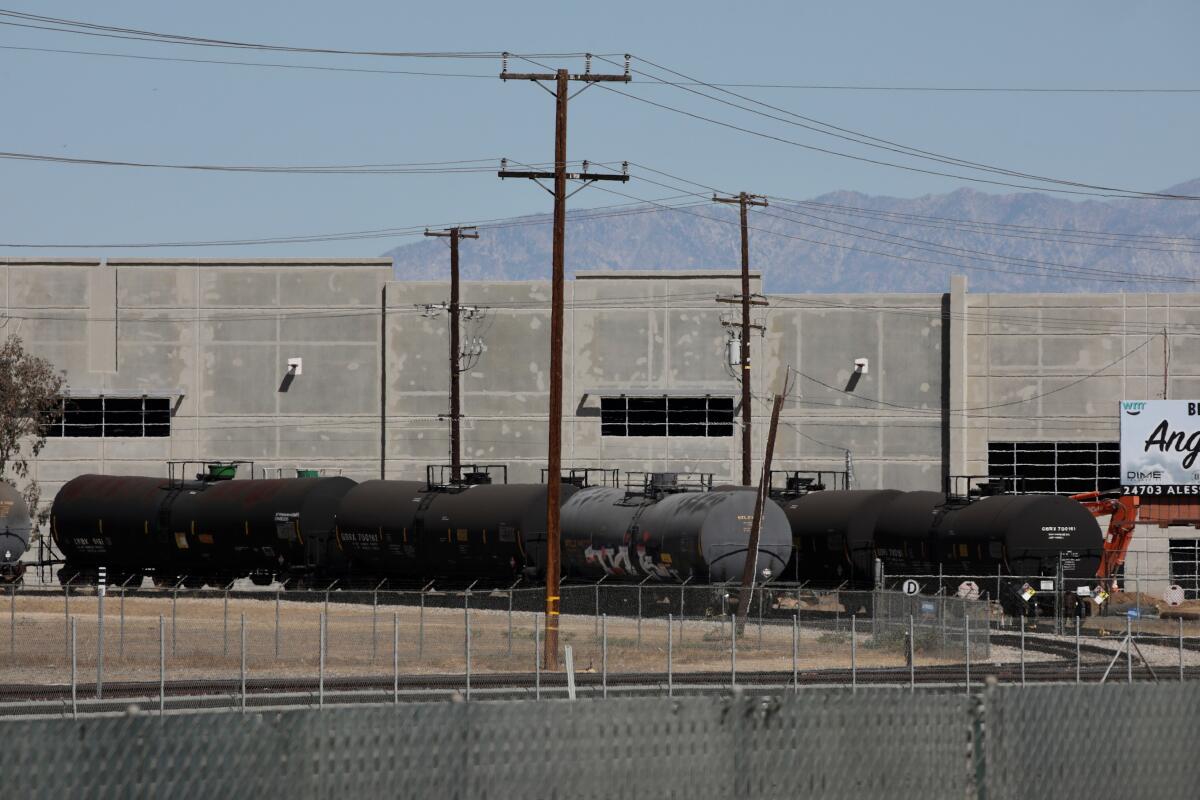Evacuations lifted after chemical reaction in Riverside County rail car raised explosion fears

- Share via
Evacuation orders were lifted in Riverside County on Saturday morning after a chemical reaction inside a rail car parked on private property had threatened to cause an explosion, forcing people from their homes two days before.
Both directions of the 215 Freeway in Perris were reopened Friday night, although the Harley Knox offramps remained closed Saturday, officials said.
Authorities are continuing to urge the public to avoid the area near Harvill and Oleander avenues , where on Thursday the railroad tank car carrying styrene, a highly volatile liquid typically used in plastic and rubber products, dangerously overheated.
Authorities were concerned that if heat and pressure were to continue to build in the car, it could explode or create a chemical cloud that could spread over Perris and Moreno Valley, said Capt. Richard Cordova of the California Department of Forestry and Fire Protection in Riverside County.
When styrene is in transit, a stabilizing chemical is added to it to keep it safe, Cordova said. The stabilizer has a lifespan of 45 days. For unknown reasons, the chemical has benn in the rail car for 55 days so the stabilizer lost its effectiveness, resulting in the reaction, he said. The car had been parked on tracks on private property where trains’ contents are offloaded, he said. He was unable to say who owns the property or the chemicals but said the train originated in Texas.
Once authorities were able to get key players involved, including the manufacturers of the rail car and the chemicals, they learned it was possible to hook a fire hose up to the train, which has built-in coils that run water through the tank, Cordova said. After setting up the system Friday evening, they were able to lower the temperature inside the car from 350 degrees to 230 degrees, he said. Styrene typically stays at about 85 degrees.
Crews had been monitoring the temperature using a drone but as things cooled off, they were able to physically access the area and get more accurate readings using a thermal energy camera, Cordova said. They were also able to add more stabilizer to the styrene, he said.
Crews continued to work Saturday to get the car as cool as possible, at which point a private hazmat team would offload the contents, Cordova said. No long-term effects from the leak are anticipated, he said.
Firefighters and hazardous-materials personnel first responded to large plumes of smoke coming from the rail car around 7:40 p.m. Thursday. Authorities ordered the evacuation of 170 homes and multiple businesses.
By Saturday, the danger had lessened to the point where people could return home, provided they stayed away from the area where teams were still working, Cordova said.
Times staff writers Alexandra E. Petri and Gregory Yee contributed to this report.
More to Read
Sign up for Essential California
The most important California stories and recommendations in your inbox every morning.
You may occasionally receive promotional content from the Los Angeles Times.














